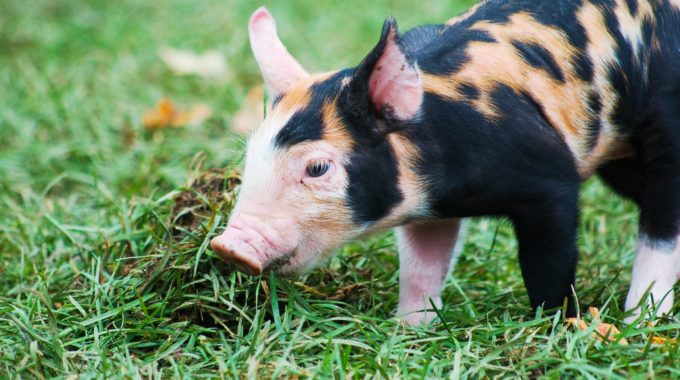Piggy in the Middle: farming with heart
You’ve undoubtedly heard the expression, “happy as a pig in mud”. But if you were to pay a visit to the Mayne farming family in Kilkivan, in the Gympie Region of Queensland, you might well be tempted to change that saying to “happy as a Piggy in the Middle”.
Farmer cousins Dean and Mason Mayne, along with their wives Kate and Krystal, set up Piggy in the Middle in 2016. Their objective? To farm pigs, sheep and chickens using ethical principles, allowing the animals to graze as nature intended, eschewing the use of chemicals, hormones, antibiotics and pesticides and letting the land regenerate using organic rotational practices. The two families have set up twin farms close by to each
other, spanning around 250 acres between them.
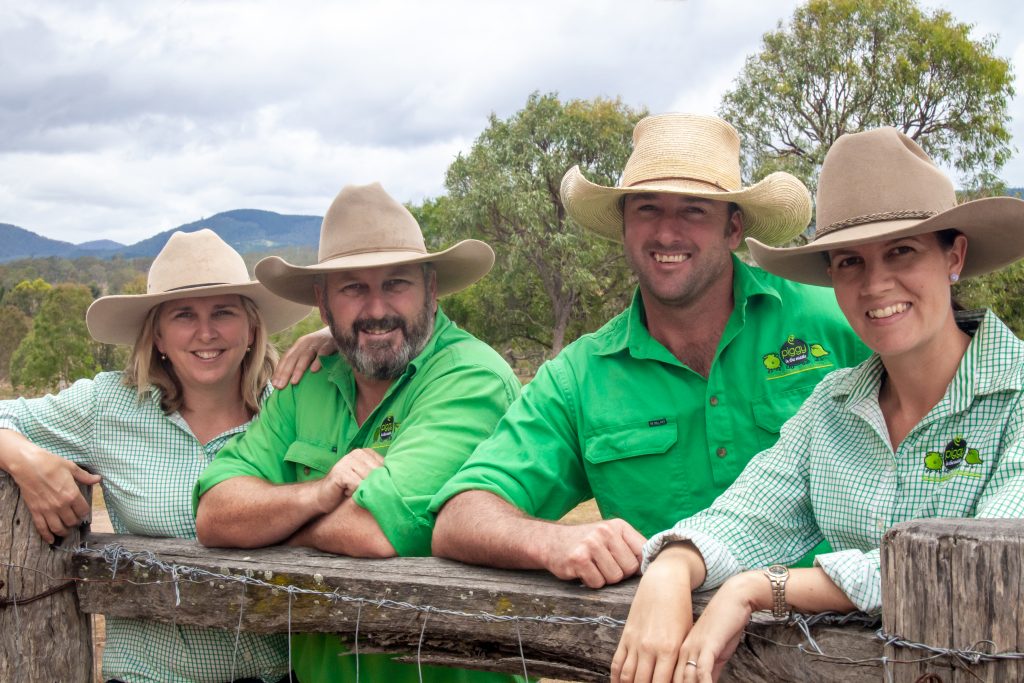
Piggy in the Middle’s free-ranging pigs are a mixture of heritage breeds chosen specifically for their individual characteristics. They include Berkshire, Duroc, Landrace and Saddleback. By cross-breeding the pigs, the Maynes have created what they dub a “super pig”. It has great marbling with the right amount of fat coverage. The pigs are free to roam around and forage for food, and are provided with plenty of mud for wallowing, which lets them exercise their inherent “pigginess”. All this joyous, healthy living has led to pigs that produce juicy, well-marbled, boldly-flavoured meat.
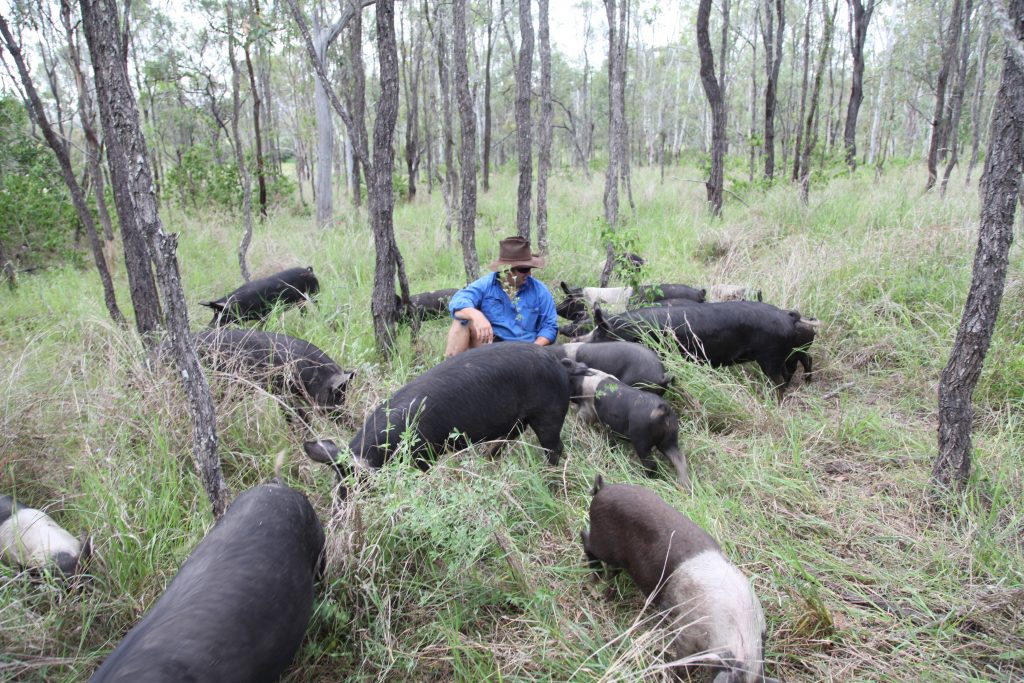
The PROOF is in the eating
“We are PROOF accredited,” says Mason Mayne, who took some time out to speak with Eativity. “It stands for Pasture Raised On Open Fields. ‘Free range’ animals can still be in a shed with a pen around it, whereas ours are out on grass all the time, moving around.”
Moving the pigs around regularly isn’t just good for the pigs themselves; it also does wonders for the land, and not just because they eat pest shrubs like lantana.
“If you don’t let the animals chew the grass down, it just sits there,” Mayne explains. “And so the next season it’s still standing there, but the grass has grown up during the winter. So the sunlight can’t get to the growth point to the grass – it just sits there oxidising.
“So we get the pigs in there and they chew it down so it’s all knocked over. That way, when the growing season comes, the sunlight can get to the growth point.”
Once one area has been “knocked over” by the pigs, they’re moved along to a fresh spot. All this regular rotation means that the pigs have access to the wide variety of nutrients and minerals that are available in fresh pasture. It also keeps them away from their dung, which is used as a natural fertiliser. Once the four-footed animals have had their turn, then it’s the chickens’ turn to do their bit – scratching and aerating the ground, enjoying a good old-fashioned dust bath or two and eating any parasites that may remain.
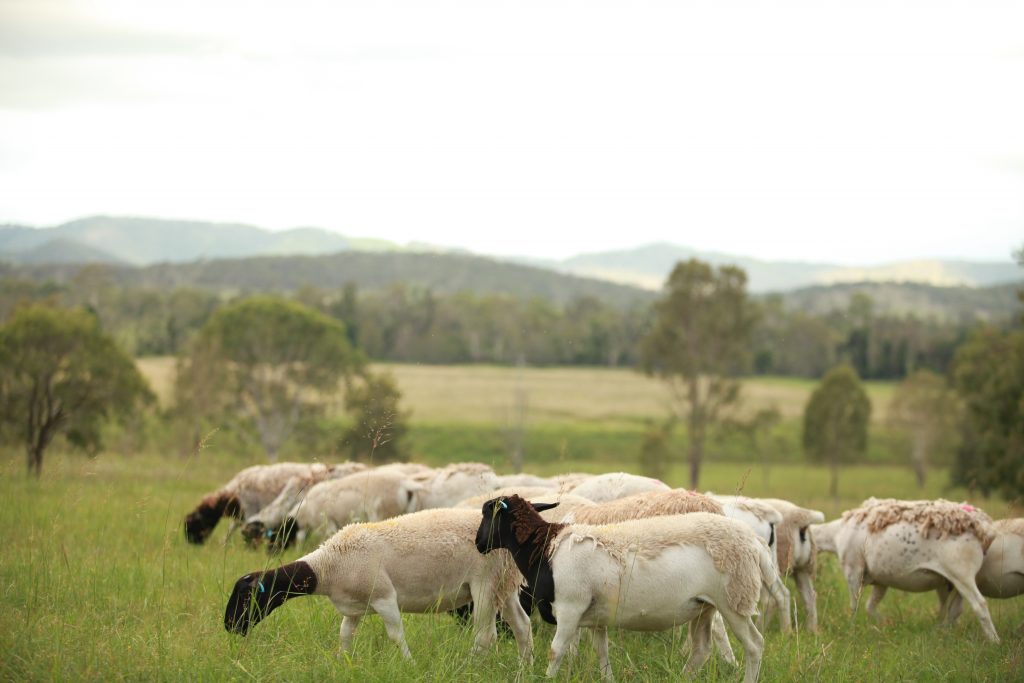
Shear inspiration
Piggy in the Middle also raises Dorper sheep, which are remarkable in that they’re self-shedding, which means that no shearing is required.
“They’re proper meat sheep – little stocky fellas that are pretty good eating,” Mayne says. “They’re good drought-tolerant sheep as well. The breed is originally from South Africa, where it’s dry. So they do pretty good where we are.”
The sheep are also free to roam and graze freely, and are watched over by gentle, giant Maremma sheepdogs. Mason has four Maremmas to watch over his meat chickens and sheep, while Dean has six to guard his laying hens and sheep.
“You wouldn’t have any sheep or chickens left if you didn’t have Maremmas where we are,” Mayne says. “We have foxes, we have dingoes here and wild dogs as well. I’ve never seen a Maremma really attack a dingo; their presence and their barking is enough to keep them away. I guess that’s enough for them to think twice about taking on a big dog like that!”
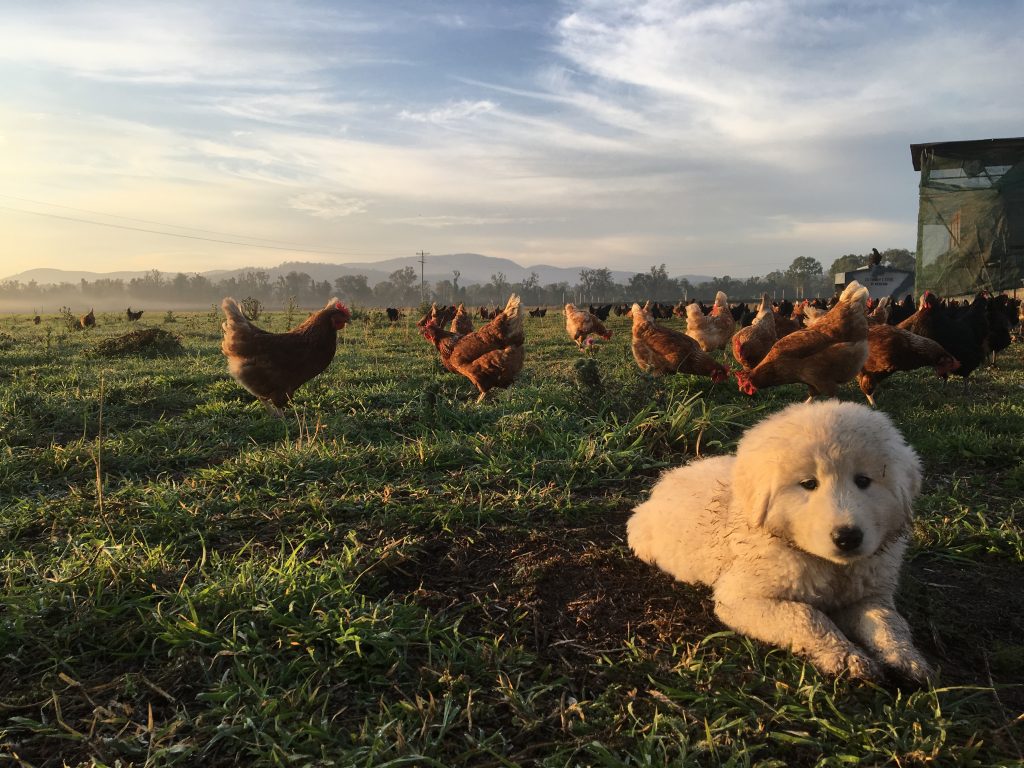
Shacon things up
As part of their aim to be as self-sufficient as possible, the Maynes invested in their own on-site butchery, which gives them greater control over how Piggy in the Middle meat is cut and packaged. They also have their own smoker, and produce a mouth-watering array of produce, from salami and Kranskys to sausages, ham, bacon and – wait for it – bacon salt.
“It all started at the butcher house,” Mayne says. “When we sliced our bacon, we would have bits left over. So, we teamed up with a chef in Gympie called James Barnden. He came up with the idea of making bacon salt with all the offcuts. He dehydrates it, and then grinds it up and mixes herbs and spices and salt. You can use it as a rub or a seasoning. I think it’s the only bacon salt in Australia with actual bacon in it.”
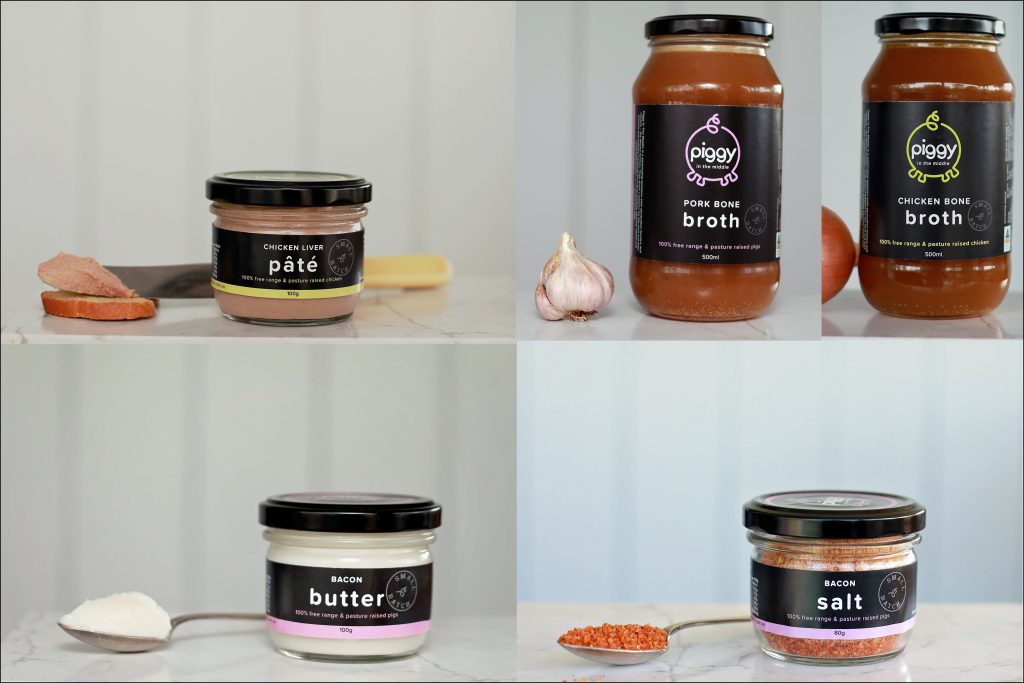
Think that sounds good? You may also be intrigued to try another Piggy creation: shacon.
“It’s lamb bacon,” Mayne says. “It’s like a cross between roast lamb and bacon. We started doing it when we used to do farmers’ markets. This lady told us she was allergic to pork, but she loved ham and bacon. So we made shacon, and we made lamb ham for her, too.”
So how do you get your hands on all this deliciousness? Join Club Piggy. Lucky customers in Brisbane, the Sunshine Coast and Gympie can subscribe to receive mixed boxes of the farms’ super high-quality, ethically farmed fresh meat and eggs. The products are also available in some independent supermarkets in the region.
For more info on Piggy in the Middle, head to piggyinthemiddle.com.au


